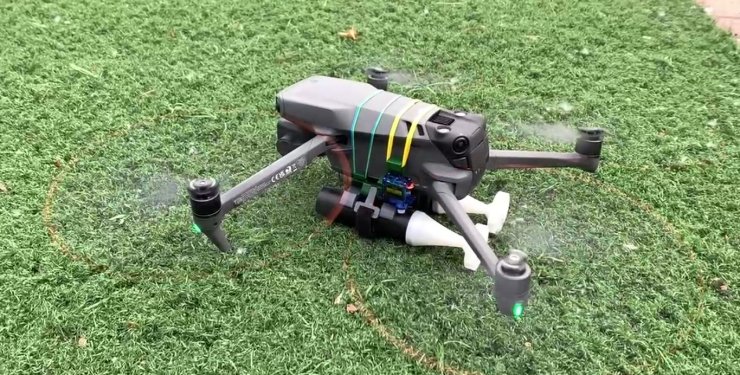
3D printing technology is developing rapidly. Rebels in Myanmar are already using 3D printed guns seen here: https://www.reddit.com/r/fosscad/comments/rcpm1q/burmese_rebels_using_the_fgc9/?utm_medium=android_app&utm_source=share
This market will resolve YES if a 3D printed anti-tank weapon is used before 2024. Example:
I'm not too well versed in how to define if something is 3D printed. But here, we'll count it if more than 50% of the components or volume of the weapon is 3D printed.
Ukraine claims to be dropping these 3d-printed bombs from drones to take out tanks:
Ukrainian drone operators claim to be able to destroy Russian tanks by dropping these bombs, which weigh around half a kilo, onto the vehicle’s roof, where the armour is thinner.
@DrewSpartz is this sufficient for a YES resolution?
@chrisjbillington Ooh, good find! This almost certainly resolves yes:
Lyosha’s team prints the plastic shells of around 1,000 “candy bombs,” as these improvised explosive devices have come to be known, every week. [...] Some candy bombs can even be used against armoured vehicles. Copper and aluminium are pressed inside these bombs into a specially designed cone shape. When the explosives detonate, the metals are transformed into a thin jet of superheated plasma that can bore its way through armour. (The same technique is used by many commercially made anti-tank weapons.) Ukrainian drone operators claim to be able to destroy Russian tanks by dropping these bombs, which weigh around half a kilo, onto the vehicle’s roof, where the armour is thinner.
@cos they only printed the (plastic) shell. "Lyosha’s team prints the plastic shells of around 1,000 “candy bombs,” as these improvised explosive devices have come to be known, every week."
This is a misleading title. The bombs are not 3d printed.
Printing the plastic shells and then filling them with actual explosives and ignition mechanism is not an engineering breakthrough. We can do plastic shells since, like, 2013.
It definitely does not fulfill the "more than 50% of the components or volume of the weapon is 3D printed." requirement.
@PeterBuyukliev I think you're right that these bombs would not fit the >50% 3d printed by volume criteria. Anyone know if most 3d printed guns would fit this criteria? Was just a guess on my part on setting up this market.
And how much of the volume criteria would the 3d printed part of these bombs be?
@PeterBuyukliev Nowhere does the question state that this needs to involve an engineering breakthrough. Considering the importance of fins in guiding bombs to their targets, this device certainly qualifies.
@DrewSpartz Based on the photo, quite visibly, roughly half of each device appears to consist of 3D printed parts in terms of components (50% guiding fins, 50% explosive payload) although just under a third by volume.
@cos Hm, seems premature to resolve this based on over 50% of the components being 3d printed, as both the guiding fins and the payload are made up of many subcomponents that would be hard to tally up and define.
I also said that more than 50% of the components would have to be 3d printed, and I can't really see a case for that yet. So I won't be resolving this as YES unless someone more knowledgeable chimes in.
@DrewSpartz Alright, we can let that rest until we have a better definition of "component."
Continuing with the other line of discussion, the FGC-9 semiautomatic firearms being used by rebels in Myanmar/Burma are constructed almost entirely of 3D-printed parts. This is by design as the manufacturer intended to enable people in countries with restrictive gun control laws to manufacture it. It's almost certainly composed of significantly more than 50% 3D-printed parts by volume and perhaps also by components depending on how you count screws, fasteners, and adhesives (source).

@DrewSpartz I missed some important information! After reading the article more closely and digging further into the use of 3D-printed anti-tank weapons in Ukraine, I'm now far more confident that they consist of significantly more than 50% 3D-printed parts by volume (and, depending on how you count, also by components). For one thing, the "candy bombs" pictured in the article aren't fully assembled, missing both their nose cones and body casings.
Emanuel Zmudzinski, a Wild Bees volunteer in Lodz, Poland, makes the components—a nose cone, body and tail fin—for a 27cm-tall model called the Big Egg for less than €3.50 ($3.85), not including the explosive contents, on a 3D printer that cost around $1,200. With no need to retool production lines, candy bombs can be readily produced in different sizes. That helps drone operators make the best use of a given model’s payload capacity, where the armour is thinner. [...] Diuk, the Ukrainian soldier in Donestk, reckons that his country’s military drones now drop around 200 different types and sizes of candy bombs.
For another, these "candy bombs" aren't the only 3D-printed anti-tank devices currently being used in Ukraine! Some of the larger anti-tank explosive devices consist almost entirely of 3D-printed parts (again, aside from the explosive payload).





@DrewSpartz Yep! A few of the pictured designs are even discussed in the original article.
